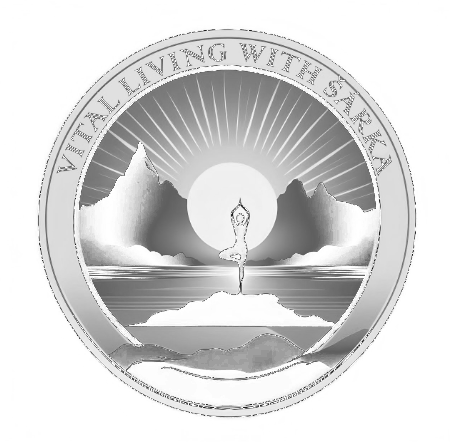In today’s fast-paced world, maintaining a healthy lifestyle is more important than ever. Functional fitness and weight training are two of the most effective ways to improve strength, mobility, balance, and overall well-being. Whether you’re an athlete, a busy professional, or a senior looking to maintain independence, these training methods can transform your body and enhance your quality of life.
What is Functional Fitness?
Functional fitness focuses on exercises that mimic real-life movements, helping you perform daily activities more efficiently. These exercises strengthen multiple muscle groups at once, improving coordination, balance, and mobility.
Benefits of Functional Fitness
- Improves Everyday Strength: Functional movements like squats, lunges, and pushing exercises make lifting, bending, and reaching easier in daily life.
- Enhances Flexibility and Mobility: Helps maintain joint range of motion, reducing stiffness and improving posture.
- Reduces Risk of Injury: Strengthening stabilizing muscles prevents falls and muscle imbalances.
- Boosts Cardiovascular Health: Many functional exercises incorporate dynamic movement, elevating the heart rate and improving endurance.
- Increases Core Strength: Core-focused exercises like planks and kettlebell swings help with spinal alignment and lower back support.
What is Weight Training?
Weight training, also known as resistance training, involves lifting weights or using resistance bands to build muscle mass, bone density, and metabolic function. It is one of the most effective methods for fat loss, strength building, and improved endurance.
Benefits of Weight Training
- Builds Lean Muscle Mass: Helps tone and strengthen muscles, making daily tasks easier.
- Strengthens Bones: Reduces the risk of osteoporosis by increasing bone density.
- Boosts Metabolism: More muscle mass increases calorie burn even at rest.
- Enhances Mental Health: Releases endorphins, reducing stress and anxiety.
- Improves Heart Health: Lowers blood pressure and promotes cardiovascular efficiency.
The Connection Between Functional Fitness and Weight Training
Functional fitness and weight training work together to create a balanced fitness routine. While functional exercises improve movement patterns, weight training builds the strength needed for those movements.
How They Complement Each Other:
- Injury Prevention: Stronger muscles and proper movement mechanics decrease injury risks.
- Improved Posture and Alignment: Strengthening postural muscles enhances spinal health.
- Greater Stamina and Endurance: Weight training enhances muscle efficiency, while functional training improves energy usage.
Best Functional Fitness and Weight Training Exercises
Functional Fitness Exercises:
- Squats: Strengthen legs, glutes, and core while mimicking real-life movements like sitting and standing.
- Lunges: Improve balance and coordination by engaging the lower body and stabilizing muscles.
- Push-ups: Develop upper body and core strength, essential for lifting and pushing objects.
- Kettlebell Swings: Enhance power, endurance, and hip mobility.
- Planks: Strengthen the core, improve posture, and reduce back pain.
Weight Training Exercises:
- Deadlifts: Strengthen the lower back, legs, and core, improving lifting ability.
- Bench Press: Develop upper body strength, improving pushing movements.
- Pull-ups: Work the back, shoulders, and arms, enhancing pulling power.
- Shoulder Press: Strengthen the shoulders and improve upper body stability.
- Leg Press: Targets quadriceps, hamstrings, and glutes for lower-body strength.
How to Incorporate Functional Fitness and Weight Training into Your Routine
Beginner’s Routine:
- Monday: Functional fitness (bodyweight squats, lunges, push-ups, planks)
- Wednesday: Weight training (deadlifts, shoulder press, pull-ups)
- Friday: Combination workout (kettlebell swings, weighted squats, core exercises)
- Sunday: Active recovery (yoga, stretching, walking)
Advanced Routine:
- Monday: Lower-body weight training + functional lunges and squats
- Tuesday: Upper-body weight training + push-ups, planks, kettlebell swings
- Thursday: Full-body functional workout + weight training circuits
- Saturday: High-intensity functional exercises + heavy resistance training
Common Mistakes and How to Avoid Them
- Skipping Warm-ups: Increases risk of injury. Always start with dynamic stretches.
- Using Poor Form: Leads to imbalances and injuries. Focus on technique before increasing weight.
- Neglecting Core Training: A strong core improves posture and movement efficiency.
- Overtraining: Rest and recovery are crucial for muscle growth and avoiding burnout.
- Ignoring Flexibility Work: Stretching improves range of motion and prevents stiffness.
Nutrition Tips for Strength and Performance
- Prioritize Protein: Helps with muscle repair and growth (chicken, fish, eggs, legumes).
- Eat Healthy Fats: Support hormone production and brain function (avocados, nuts, olive oil).
- Fuel with Complex Carbs: Provide sustained energy (quinoa, sweet potatoes, whole grains).
- Stay Hydrated: Essential for recovery, performance, and joint health.
- Consider Supplements: Protein powders, omega-3s, and creatine can enhance training outcomes.
The Role of Rest and Recovery
Rest is as important as exercise. It allows muscles to repair, prevents burnout, and improves performance.
- Sleep: Aim for 7-9 hours per night to support muscle recovery.
- Active Recovery: Include light activities like walking or stretching on rest days.
- Foam Rolling and Massage: Helps reduce muscle tightness and enhances mobility.
Why Functional Fitness and Weight Training Are for Everyone
Regardless of age or fitness level, functional fitness and weight training provide lifelong benefits.
- Seniors: Improves balance, reduces fall risk, and maintains independence.
- Athletes: Enhances sports performance and prevents injuries.
- Office Workers: Counters the effects of prolonged sitting, improving posture and mobility.
- Beginners: Builds foundational strength for a healthier lifestyle.
By incorporating functional fitness and weight training into your routine, you can improve strength, mobility, endurance, and overall well-being. Whether you’re looking to build muscle, enhance flexibility, or boost energy levels, a combination of these training methods can help you achieve your fitness goals.
Are you ready to transform your body and life? Start your journey today with functional fitness and weight training! Explore our expert resources, personalized workout plans, and professional guidance to take the first step toward a stronger, healthier you.
SOURCES:
American College of Sports Medicine. (2021). ACSM’s guidelines for exercise testing and prescription (11th ed.). Lippincott Williams & Wilkins.
National Strength and Conditioning Association. (2020). Essentials of strength training and conditioning (4th ed.). Human Kinetics.
World Health Organization. (2021). Physical activity and adult health. https://www.who.int/news-room/fact-sheets/detail/physical-activity

